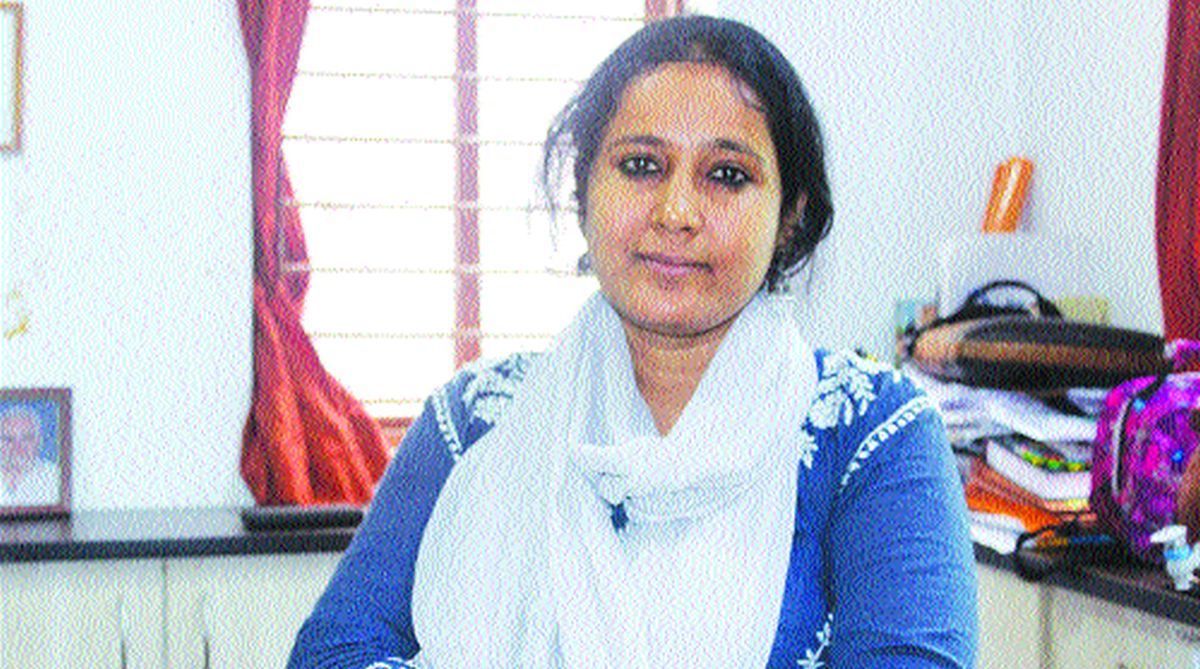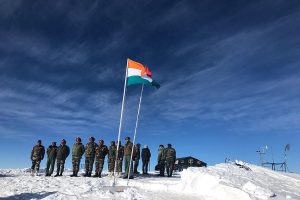 She looks like the girl next door. Hailing from a prosperous village in Mehsana district of north Gujarat, Mittal Patel had never seen poverty at close range.
She looks like the girl next door. Hailing from a prosperous village in Mehsana district of north Gujarat, Mittal Patel had never seen poverty at close range.
But her empathy for deprived people created a rare determination that effectively changed the lives of at least 100,000 people in Gujarat. And, she is continuing with her efforts to bring more nomadic people into the mainstream of society and give them a dignified life.
Advertisement
Ms Mittal Patel, 37, has been instrumental in giving the nomadic tribes of Gujarat an identity of their own and a semblance of dignity.
It is due to her ceaseless efforts that the nomadic tribes of Gujarat are now officially recognised as citizens of India – their prized possession being the voter card so important to prove one’s identity.
READ | Maqbool Ahmed Mansoori: Providing one square meal a day
“More than 90 per cent of the nomadic people have now been included in the voters’ list in Gujarat”, says Mittal, encapsulating the result of her decade-long fight for their rights.
The mother of a school-going girl adds that the voter card by itself is no passport to a dignified life, and thus, the next phase of struggle is currently on to get these nomadic tribes ration cards – albeit in the BPL category – followed by admission in school for their children.
Though Mittal’s tireless efforts has nearly solved the identity crisis of nomadic tribes, they are now facing new trouble with the emergence of lynch mobs which target homeless people merely on suspicion. In June this year, a ‘Maadaari’ woman was lynched to death and three others were injured by a mob in Ahmedabad on rumours that they were child-lifters.
Despite gaining identity as citizens, lynch mobs on the prowl have robbed the nomadic tribes of their livelihood as they are now too scared to venture out to display their traditional skills, said Mittal.
READ | Bhan Singh Jassi: A Santa for slum children
She quickly organised a state-level convention of the nomadic people followed by a three-kilometer-long human chain in the upmarket area of western Ahmedabad. Mittal also led a delegation of the nomadic people to the authorities, asking them to provide protection from lynch mobs and arrange alternate livelihoods.
It was not easy for the lone young woman to combat official apathy towards nomadic citizens who do not have an address of their own as they are always on the move around the countryside.
After post-graduation in journalism, young Mittal Patel came to know the plight of these nomadic tribes during her project work in south Gujarat among sugar cane workers who lived in inhuman conditions and were subjected to exploitation of various types.
“I had no idea about these nomadic tribes earlier”, said Mittal. She found it astounding that the nomadic tribes had no proof that they were citizens of the country.
READ | When communities feed their needy
These nomadic people eke out a living as street entertainers and traditional service providers, known variously as Maadaaris, Bajaniya, Dafers, Saperiya (snake charmers) or simply by their trades such as sharpening kitchen knives or making hand tools or straw brooms and palm leaf fans.
Very useful to society as service providers and street acrobats, Gujarat’s 28 nomadic tribes have never had a permanent home in the state. They are constantly on the move, displaying their traditional skills and selling their hand made wares.
Mittal was shocked by the discovery that these nomads, without roofs over their heads, had no identity cards, ration cards, voter cards or proof of residence.
In the absence of identity proof, their children were denied admission to schools and thus remained illiterate, she realised.
READ | Nirmal Chandel: Moving mountains in Himachal
Confronted with their plight six decades after independence, Mittal took up the challenge to help them get at least identity proof.
“No politicians were interested to take up the issues of nomadic tribes as they didn’t exist even in the voters’ list”, Mittal said. So, she started the process of getting them enrolled on voters’ lists.
That was easier said than done as official apathy towards homeless people came in the way, Mittal Patel said narrating how she had to convince the then State Chief Election Officer Vinod Babbar to take up the matter with the Election Commission at Delhi.
As these nomadic tribes normally settle down at one place during the monsoon, the Election Commission agreed to enlist them as homeless residents of that very spot. Mittal and her Vicharta Samudya Samarthan Manch (VSSM) immediately faced a hurdle.
Though such spots are generally on the outskirts of villages, the panchayats objected to their listing “fearing” that the nomadic people may later become claimants to nearby land. This was just one of the hurdles Mittal faced as she took up the cause of Gujarat’s four million nomadic people.
“By 2007-2008, about 20,000 of these nomadic people were included in the voters’ list with the VSSM volunteers filling up the forms on their behalf”, said Mittal. As the movement picked up, more and more nomadic people got themselves registered. Consequently, many of these nomads exercised their franchise for the first time in 2009.
Now that they were armed with voter cards, Mittal and her team worked on getting them ration cards which helped their children to get admitted to schools from 2013 onwards.
With a few lakh nomadic people having voter cards as well as ration cards by the time of the 2012 assembly election, Mittal was able to convince the two major political parties in Gujarat to include their issues in their election manifestos too.
As a result, nomadic tribes are now entitled to subsidies of Rs 70,000/- for housing schemes under ‘Awas Yojana’, issue of caste certificates and LPG connection under the ‘Ujjwala Yojana’.
The next frontier Mittal Patel seeks to conquer is to get the government to start rehabilitation schemes for those, like snake charmers and animal entertainers, who have lost their traditional livelihoods. Many battles have been won, but the war still rages.












